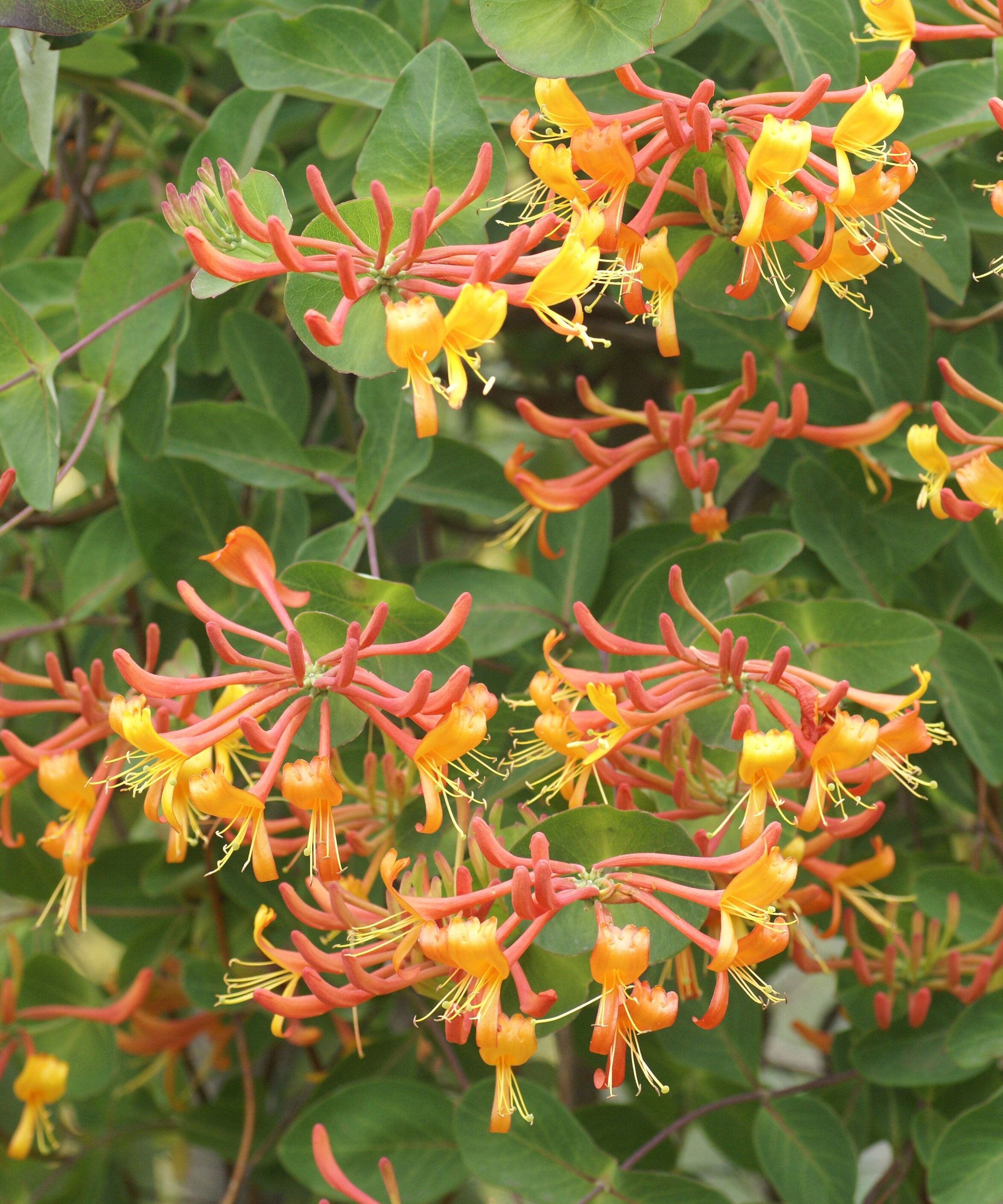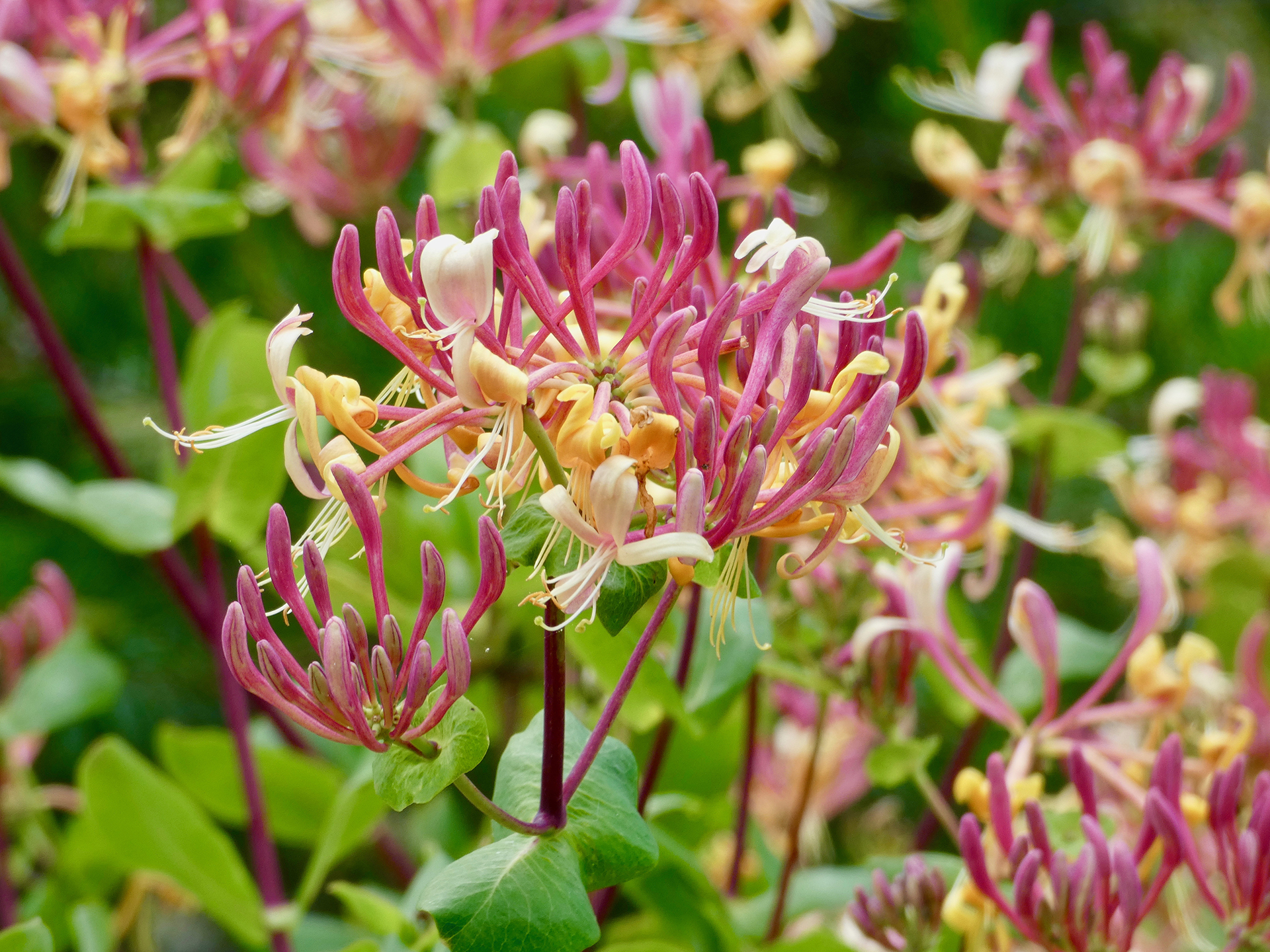How to grow honeysuckle – when, where and varieties to plant
Find out how to grow honeysuckle to enjoy the color, scent and versatility of these wonderful climbing plants and shrubs


Once you have mastered how to grow honeysuckle, you can enjoy the wonderfully scented flowers, colors and versatility of the different varieties of this flowering climber and shrub.
Along with the other best climbing plants that grow on vertical structures, honeysuckle is useful for bringing interest and beauty to a different dimension, as well as
Growing honeysuckle in pots is also a good idea for smaller spaces, training it to scramble over a trellis or archway on a terrace or balcony, which can provide privacy, or add scent at a higher level.
'Honeysuckle can be used to mask the less aesthetically pleasing areas of the garden, too – such as a shed, bin store or ugly wall – and add fragrance as well as beautiful flowers to a wall, trellis or even a fading tree,' says Cathi Penter of Hayloft Plants.
How to grow honeysuckle – choosing the best variety

As a flowering climber, honeysuckle is a particularly useful vertical garden idea to plant in a small garden as they take up little ground space and can also be grown in containers.
There are both deciduous and evergreen climbing and shrubby honeysuckles. Shrubby evergreen honeysuckles can make good choices as shrubs for privacy.
Before you start growing honeysuckle, however, check which variety it is as there are some species that are considered invasive in various regions. You don't want to invite problematic plants into your backyard.
Design expertise in your inbox – from inspiring decorating ideas and beautiful celebrity homes to practical gardening advice and shopping round-ups.
The USDA Forest Service has identified a number of invasive varieties. These can grow in most soil types, quickly develop complex root systems – making them difficult to remove – form dense colonies, and reduce plant diversity by blocking sunlight to low-growing shrubs.
Honeysuckle varieties considered invasive in some areas of the US include:
- Morrow's honeysuckle – Lonicera morrowii
- Amur honeysuckle – Lonicera maackii
- Bell’s honeysuckle – Lonicera x bella
- Japanese honeysuckle – Lonicera japonica – also considered invasive in the UK
If you're wondering how to grow honeysuckle, the good news is that there are still many species that are good choices for your garden and non-invasive. These include the native American trumpet honeysuckle, Lonicera sempervirens, which is native to the east coast of the US, and hardy in USDA zones 4 to 9.
In the UK, the native Lonicera periclymenum, woodbine or European honeysuckle, is known for its delightful scent.
'There really is a honeysuckle to suit any style of planting – some are subtle and scented, while others put on an especially bright and colourful show, perfect for a more tropical garden look,' says Jack Aldridge of RHS Garden Wisley.
Just always check the name of your chosen variety and if it is invasive in your area.

Are honeysuckle easy to grow?
Honeysuckle are easy to grow, but as with all plants, ensure they enjoy the correct conditions so that they will thrive.
'All honeysuckles are fast growing, vigorous, and adaptable,' explain the experts at White Flower Farm.
Honeysuckles can be bought and planted all year round, but the ideal time to plant deciduous varieties in late winter, and evergreens in spring or fall.

Where do you plant honeysuckle?
Climbing honeysuckle can be planted and trained to grow up trellises, pergolas and supports, adorning walls or as fence decorating ideas. Choose an evergreen variety if you’d like coverage all year round. Shrubs can be used as hedges or ground cover.
Honeysuckle grow best in dappled shade, in moisture-retentive, humus-rich soil, with some shade at the roots.
They need support for their stems to twine around, such as wire or lattice. Prepare the fence or wall by attaching horizontal and vertical wires or trellis panels, and keep some airflow around the plant by leaving a gap of at least 2 inches (5cm) between the surface of the fence or wall and the support.
'Honeysuckle are incredibly useful, given their tolerance of shade, making them perfect climbers for a north wall, while their twining habit makes them ideal for growing into a large shrub or another climber,' says Jack.

What is the best way to grow honeysuckle?
The best way to grow honeysuckle depends on the variety you prefer and what you want from the plant. Select for flowering time, color or scent to create your desired display.
Look at flowering times and choose ones that flower during a period that offers a succession of interest in your garden. Honeysuckles typically flower from late spring through to early fall, but not all are scented. While deciduous climbers tend to have a better display of flowers, evergreen or semi-evergreen climbers will cover a wall or vertical structure year round.
An important factor of how to grow honeysuckle with success is to ensure you have enough space for it to spread.

Can you grow honeysuckle in pots?
Honeysuckle can grow well in pots, and is a solution if you are looking to grow evergreen climbers over a wall or pergola in a paved area.
Choose a large container and make sure there is a support structure for the plant to climb up.
Water the potted honeysuckle as needed and feed the plant annually. They will need to be potted on as they grow, and pruned to shape.
Honeysuckle will attract butterflies and other pollinators, so include potted plants around a terrace or as a patio idea around a seating area to enjoy the blooms, scent and visiting wildlife.

How do you maintain honeysuckle?
Once you have planted a climbing honeysuckle, cut back the existing shoots by two thirds to encourage new shoots at the base for strong stems to train up the support.
Water your young honeysuckle plants regularly in the first spring and summer, and then once they are established, soak them occasionally if the soil is dry.
You can feed in early spring, and a yearly mulch of organic matter is beneficial.
The experts at White Flower Farm recommend against fertilizing at planting time and during the first growing season, as the plants need time to settle in before being pushed to grow.
Leaving spent flowers on the plant is a good wildlife idea as it will encourage berries for the birds. Carolyn Dunster, author of Urban Flowers, also urges gardeners 'not to cut back flowering honeysuckles as these will attract bees and any other pollinating insects as they start to come out of hibernation – they are all perfumed and that is part of the attraction,' she explains.
Honeysuckle can suffer from powdery mildew in summer, especially if the leaves get scorched, or if the soil is too dry. In this case, cut the plant back, advises Jane. To help prevent mildew, mulch with compost.
If the soil is low in nutrients or too dry leaves can yellow and drop off, so again mulch will help to emulate woodland conditions.

When do you prune honeysuckle?
Deciduous honeysuckles need regular pruning once established, once a year.
'Do this after about 18 months to 2 years, as they flower on new growth. If left they will go woody and it’s a devil of a job to get them back to good flowering,' says Jane Lindsay of climbing plant specialists Tynings Plants.
The RHS advise pruning late-flowering honeysuckle in spring, as they flower on the current season's growth, so need only a trim.
Prune early-flowering varieties after flowering, as these flower on the previous season's growth. Cut back shoots by one third.
'I would prune half at a time to keep the sap rising and leaving three or four shoots growing will keep the sap rising,' says Jane Lindsay.
Rachel is senior content editor, and writes gardening content for homesandgardens.com, Homes & Gardens magazine, and its sister titles Period Living Magazine and Country Homes & Interiors. She has written for lifestyle magazines for many years, with a particular focus on gardening, historic houses and arts and crafts, but started out her journalism career in BBC radio, where she enjoyed reporting on and writing programme scripts for all manner of stories. Rachel then moved into regional lifestyle magazines, where the topics she wrote about, and people she interviewed, were as varied and eclectic as they were on radio. Always harboring a passion for homes and gardens, she jumped at the opportunity to work on The English Home and The English Garden magazines for a number of years, before joining the Period Living team.
